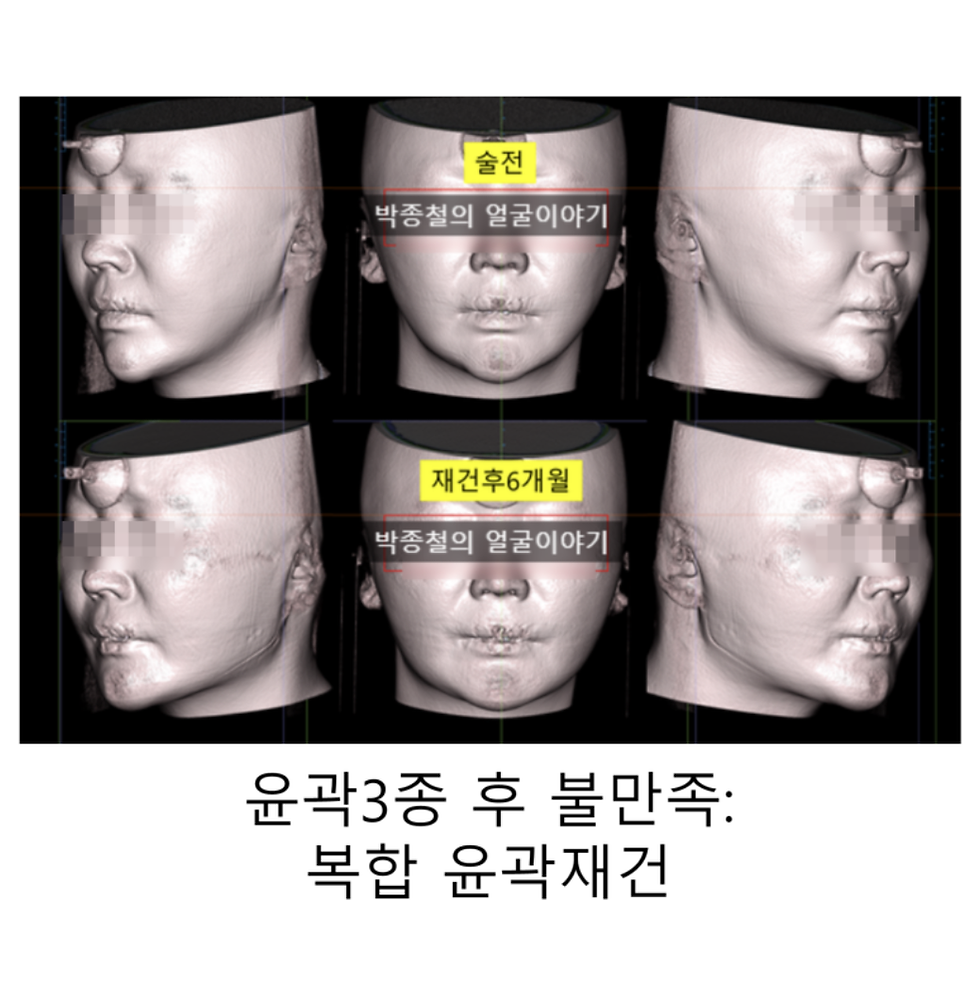Objective Analysis of Soft Tissue Changes after Anterior Segmental Osteotomy: A Focus on Lips, Nose, Philtrum, and Chin
- Dr. Park

- Nov 28, 2024
- 2 min read
Introduction
Anterior Segmental Osteotomy (ASO) is a highly effective surgical procedure for correcting dentofacial deformities, particularly maxillary protrusion. Patients considering ASO often express significant interest in understanding the postoperative changes to their soft tissues, including the lips, nose, philtrum, and chin. This study aims to provide an objective analysis of these soft tissue changes following ASO, aiding patients in predicting surgical outcomes. To achieve this, we meticulously compared preoperative and postoperative CT images within a consistent coordinate system.
Methods
This study included patients who underwent ASO in conjunction with mandibular angle reduction and genioplasty. Genioplasty involved T-shaped osteotomy without advancement. By employing a standardized coordinate system, we were able to objectively compare and analyze soft tissue changes, with a particular focus on alterations in nasolabial angle, philtrum length, submental fat, and nasal width.
Results


Nasolabial Angle: A noticeable increase in the nasolabial angle was observed postoperatively, indicating an improvement in the angle between the nose and upper lip. This change is attributed to the posterior repositioning of the maxilla, a key element of ASO surgery.
Chin Position: Despite the absence of chin advancement, a perceived forward projection of the chin was observed postoperatively. This can be attributed to the combined effects of maxillary setback and T-shaped genioplasty, which altered the relative position of the chin.

Lip Changes: Postoperatively, a reduction in lower lip thickness was observed, resulting in a thinner appearance. This is likely due to the relaxation of perioral muscles following the correction of maxillary protrusion, allowing for a more natural lip closure.
Submental volume: A decrease in submental volume was observed postoperatively. This reduction can be attributed to the repositioning of the maxilla and mandible, leading to improved muscle tone and tongue position.

Philtrum Length: A tendency towards increased philtrum length was noted postoperatively, primarily due to the increased distance between the subnasale and the labrale superius.


Nasal Width: Changes in nasal width were minimal and virtually imperceptible both visually and upon animation analysis. This suggests that any minor changes observed could be attributed to alterations in muscle tension around the nose.
Conclusion
ASO induces various soft tissue changes, primarily positive, including improvements in nasolabial angle, lip thickness, and submental fat. However, the potential for increased philtrum length should be considered and discussed with patients during preoperative consultations. These findings provide valuable insights for both patients and surgeons, facilitating realistic expectations and informed decision-making regarding ASO surgery.

Objective Analysis of Soft Tissue Changes after Anterior Segmental Osteotomy: A Focus on Lips, Nose, Philtrum, and Chin



Comments